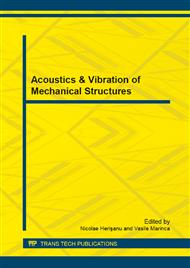p.184
p.191
p.195
p.203
p.208
p.213
p.217
p.222
p.230
Plantar Pressure Improvement after Correction of Hallux Valgus Condition — Static and Dynamic Approach
Abstract:
The paper proposes a protocol used for data processing, designed to handling the foot pressure data recorded in human walking. This protocol represents a stage of a global protocol that deals with identification of some biomechanical parameters used in diagnosis and prediction. In order to validate the functionality of the data processing protocol, a lot of 10 patients suffering of Hallux Valgus deformity were recorded both before and after the surgery. The patients were divided into three age groups: 20-30, 40-50, 51-60. The measurements consist in recording of plantar pressure data in both dynamic (gait) and static way. This is an additional investigation to the clinical usual examinations in hallux valgus patients. The recorded data were averaged per each subject and then per whole lot. Based on determining the ground reaction force (GRF) variation in time and observing the foot pressures on static measurements, we can conclude that the static approach of evaluation of Hallux Valgus condition is no very reliable.
Info:
Periodical:
Pages:
208-212
Citation:
Online since:
September 2013
Authors:
Price:
Сopyright:
© 2013 Trans Tech Publications Ltd. All Rights Reserved
Share:
Citation:


